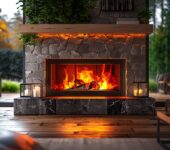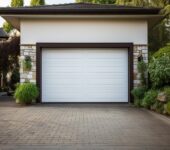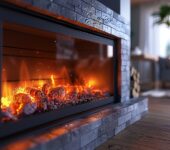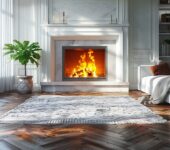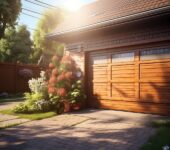Table of Contents
- 1 Inspect the Chimney
- 2 Clean the Fireplace
- 3 Use the Right Fuel
- 4 Use a Fireplace Screen
- 5 Keep Flammable Materials Away
- 6 Install Carbon Monoxide Detectors
- 7 Open the Damper
- 8 Never Leave the Fire Unattended
- 9 Use Fire-Resistant Materials
- 10 Hire a Professional
- 11 Regular Maintenance
- 12 Keep Children and Pets Away
- 13 Use a Fireplace Grate
- 14 Consider Alternative Heating Options
- 15 Practice Fire Safety
- 16 Keep Safe With Your Old Fireplace
Between 2016 and 2020, it is estimated that heating equipment fires affected an average of 44,210 homes and caused around 480 civilian fatalities annually.
Fireplaces have been around for centuries, and they still provide a cozy and warm atmosphere in many homes today. However, if you’ve got an old fireplace, it’s essential to take certain precautions to ensure your safety.
Here are some valuable home safety tips for using an old fireplace:
Inspect the Chimney
Inspect the chimney to ensure it’s free of blockages or damage. Over time, chimneys can become clogged with soot, debris, birds’ nests, and other fire hazards. A professional chimney sweep can inspect the chimney for you and identify any potential hazards.
Clean the Fireplace
Old fireplaces can accumulate a lot of soot and debris, creating a fire hazard. Before lighting a fire, clean the fireplace thoroughly.
Use a brush and dustpan to remove any debris or soot from your fireplace. You can also use a vacuum cleaner with a brush attachment.
Use the Right Fuel
Use only seasoned hardwood firewood like oak, maple, and birch.
Softwoods like pine, spruce, and cedar aren’t recommended because they burn too quickly. Softwoods can also create a lot of creosote build-up in the chimney. This build-up is a serious fire hazard.
Use a Fireplace Screen
A fireplace screen keeps sparks and embers from flying out of the fireplace. Choose a sturdy screen made of metal or tempered glass that fits your fireplace. Keep the screen in place while the fire is burning, and don’t remove it until the fire has completely gone out.
Keep Flammable Materials Away
Keep flammable materials like paper, curtains, and furniture away from your fireplace. Don’t forget to stay at least three feet between the fireplace and any other flammable material. This will help prevent fires caused by sparks or embers.
Install Carbon Monoxide Detectors
Old and neglected fireplaces can produce carbon monoxide – an odorless and colorless gas that can be deadly. Install carbon monoxide detectors near the fireplace and in all sleeping areas to detect any gas leaks. This is especially important if you have an old fireplace that has not been updated to the latest fireplace safety standards.
Open the Damper
The damper is a small door at the top of the fireplace that allows smoke to escape through the chimney. Keeping the damper open while the fire is burning will help prevent carbon monoxide build-up in your home. Remember to close the damper once the fire has completely gone out.
Never Leave the Fire Unattended
Never leave a fire unattended. Monitor the fire at all times to ensure that it doesn’t spread and cause a fire.
Keep a fire extinguisher nearby in case of an emergency. Also, make sure everyone in the house knows how to use it.
Use Fire-Resistant Materials
Decorative items like stockings, garlands, and candles should be made of fire-resistant materials. Keep in mind that paper and cardboard aren’t fire-resistant and should never be used near the fireplace.
Hire a Professional
It’ always recommended to hire a professional for a fireplace inspection. A professional chimney sweep will inspect and clean your chimney, ensuring your safety.
They can also identify any potential hazards and make the necessary fireplace repairs or maintenance. Better to be safe than sorry when it comes to fire safety.
Regular Maintenance
Regular maintenance is crucial when it comes to keeping an old fireplace safe. Have your chimney inspected and cleaned at least once a year by a professional.
They can identify any potential hazards and make any necessary repairs or improvements. Additionally, replace any damaged or worn-out parts such as the damper or flue. A fireplace that is functioning properly is a safe fireplace.
Keep Children and Pets Away
Teach your kids about the dangers of fire and ensure they know not to play near the fireplace. Additionally, keep a barrier or screen around the fireplace to prevent children or pets from accidentally touching the flames or hot surfaces.
Use a Fireplace Grate
A fireplace grate is a metal grate that sits inside the fireplace and holds the wood off the floor of the fireplace. Using a grate allows air to circulate the wood.
This helps the fire burn more efficiently and produce less smoke. It will also prevent embers from falling out of the fireplace and onto the floor.
Consider Alternative Heating Options
If your vintage fireplace is not functioning properly or poses too much of a fire hazard, consider alternative heating options. Electric or gas fireplaces can provide the warmth and ambiance of a traditional fireplace without the need for wood or the risk of fire.
Practice Fire Safety
In addition to the home safety tips listed above, practice general fire safety rules in your home. Have working smoke detectors and carbon monoxide detectors in all sleeping areas and on every level of your home.
Keep a fire extinguisher in a visible and easily accessible location, and make sure everyone in the house knows how to use it. Develop and practice a fire escape plan with your family, and make sure everyone knows what to do in case of a fire.
Keep Safe With Your Old Fireplace
Using an old fireplace can add warmth and charm to your home, but it also comes with its own set of risks and challenges. By following these home safety tips, you can enjoy the cozy ambiance of your vintage fireplace without worrying about potential hazards.
Remember to inspect and clean your chimney regularly, use the right fuel, keep flammable materials away, use fire-resistant materials, and never leave the fire unattended.
Hiring a professional can also help ensure that your home is safe and secure. Request an estimate for your fireplace today!
Latest Articles
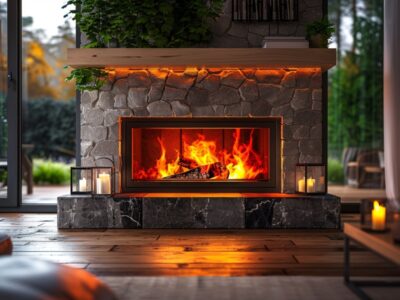
How Long Does It Take To Install A Fireplace?
Table of Contents1 Factors That Affect Installation Time2 How Long Does It Typically Take to Install a Fireplace?3 Factors That Can Extend Installation Time4 What

How To Frame Garage Doors On Rough Opening
Table of Contents1 What is a Rough Opening?2 How to Measure for a Garage Door Rough Opening?3 What Materials are Needed for Framing a Garage
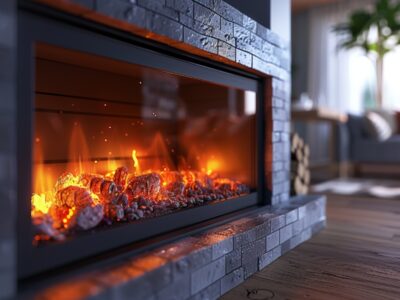
Fireplace Safety Screen Vs. Safety Glass
Table of Contents1 What Is A Fireplace Safety Screen?2 What Is Safety Glass?3 What Are The Differences Between A Fireplace Safety Screen And Safety Glass?4





